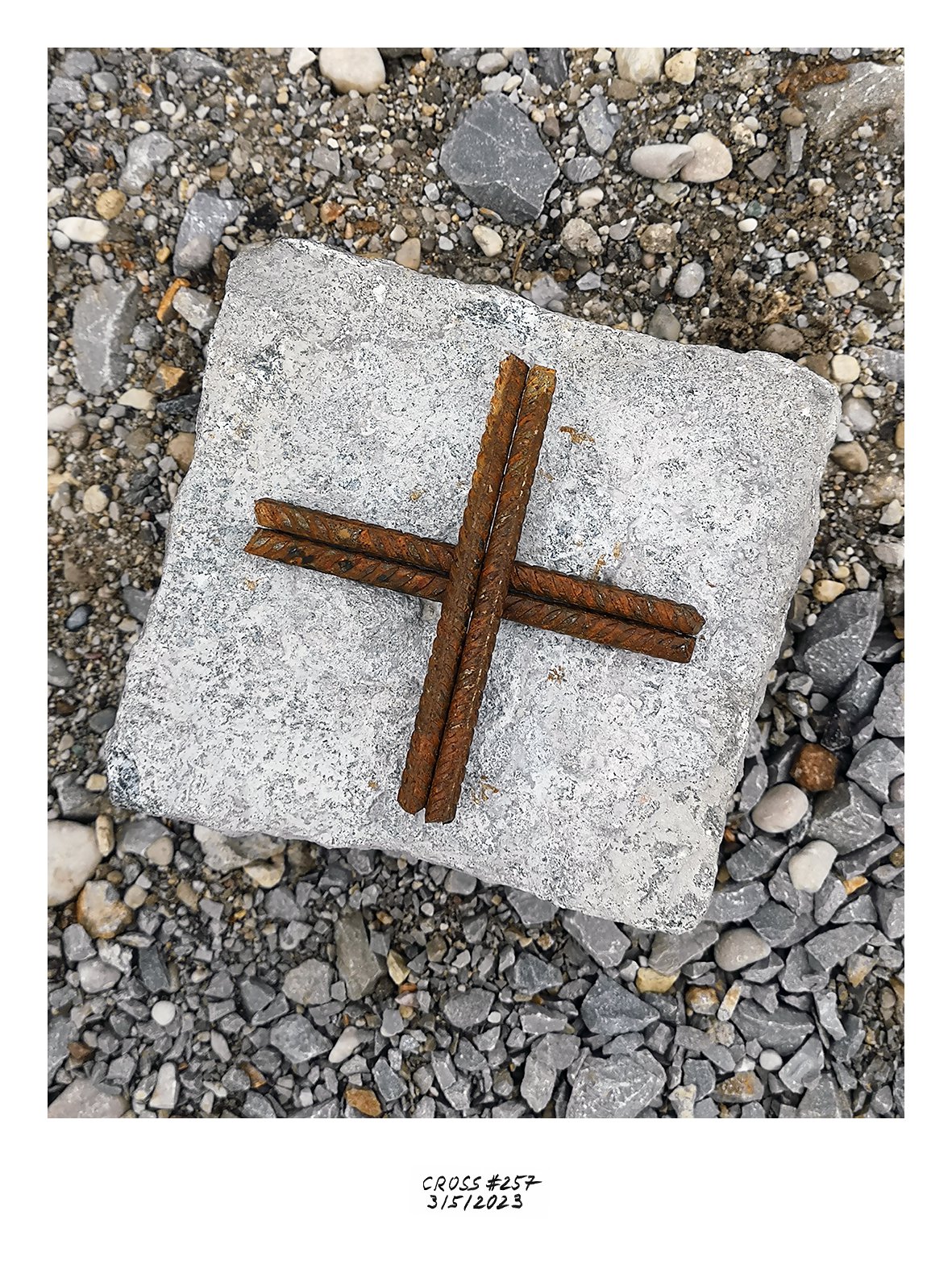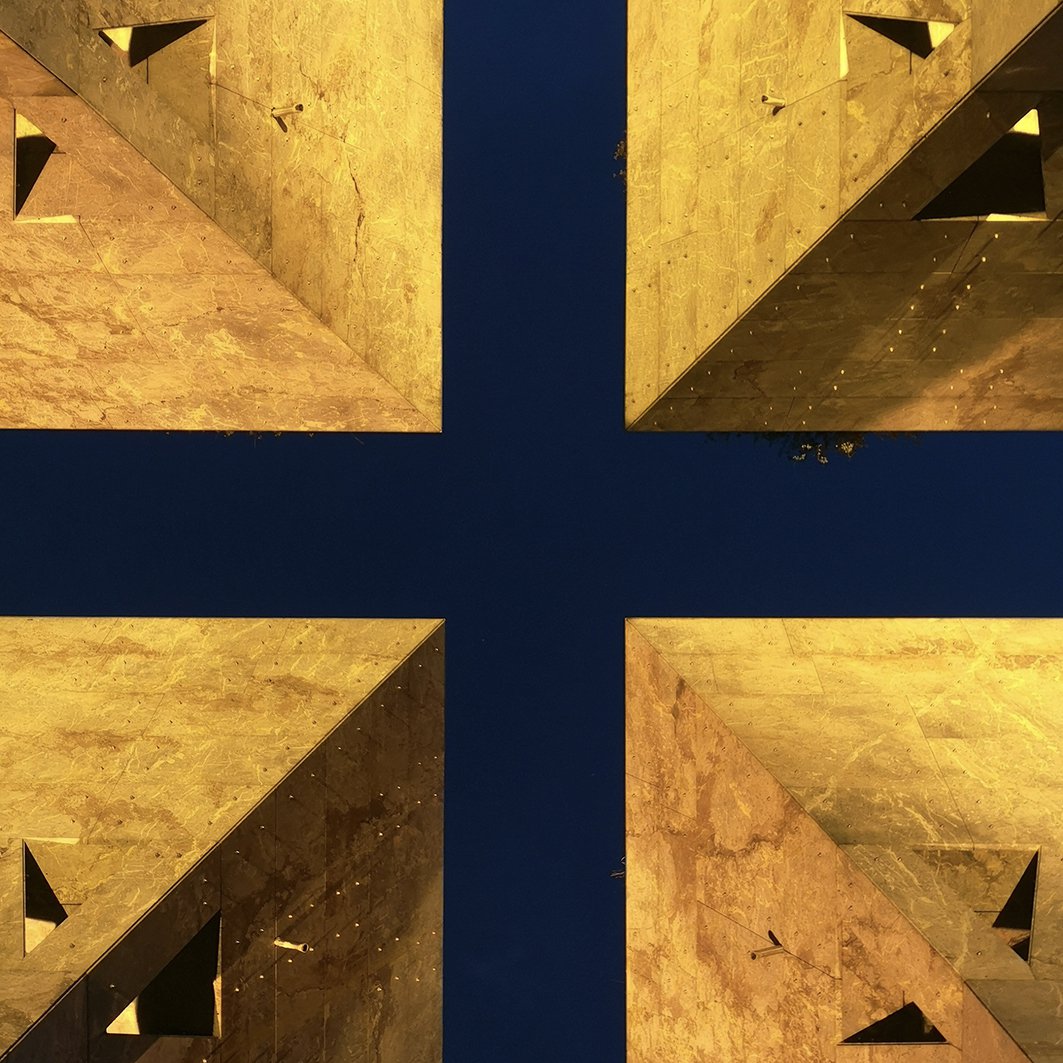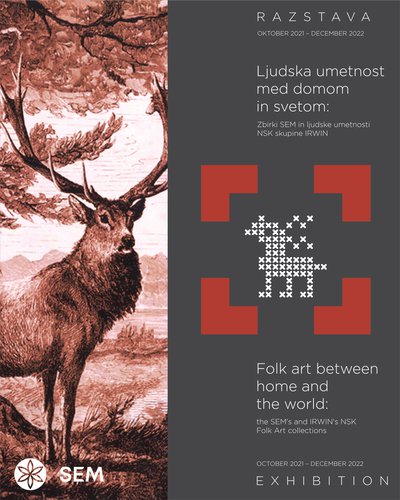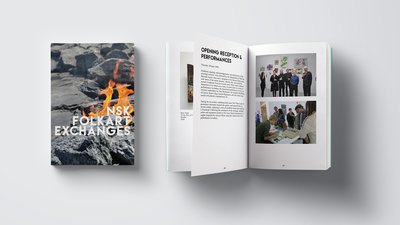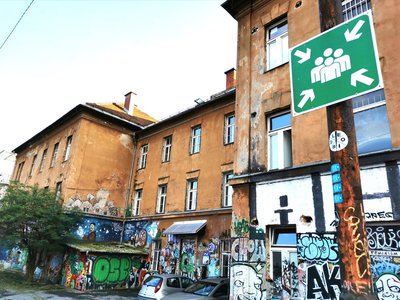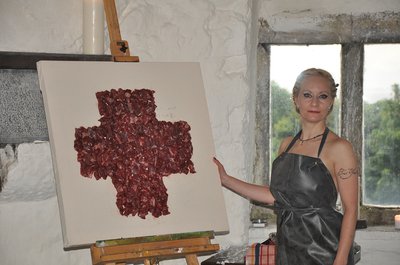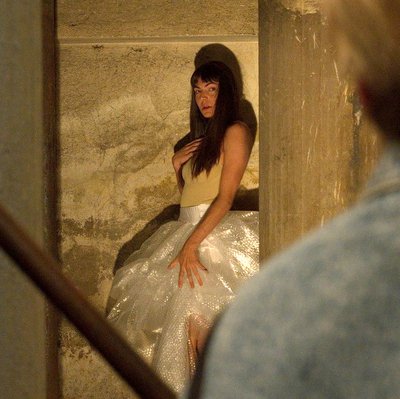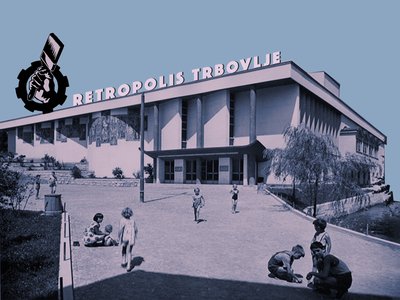The exhibited works of art are in progress. They are finished but not completed. They remain open to new ideas, concepts and contributions. They are already transient by themselves, says their author Mr. Matjaž Stopar. As long as they are in his possession, he reserves the right to change, adapt, discard, and destroy them with a new concept. And if they are sold, he intervenes with the owner's consent. As an example of a work in progress, Matjaž Stopar presented a large-format collage - a portrait of the scientist Mr. Herman Potočnik Noordung, which he digitally transformed with photos of lunar phases, similar to his self-portrait in 2013 and the monumental Grohar's Seeder (300 cm x 300 cm) in 2016, except that he painted the lunar phases in those cases. Instead of pixels - which he considered too overused - he used the analogue element of the moon and its phases as a digitalisation unit, which, due to its size - with a diameter of 24 mm in the paintings - also represents a unit of time for one day or 24 hours. Regarding Grohar's Seeder, he says he painted 4970 of them, as he wanted to preserve the impressionistic impression and the appearance of changing and shimmering light. Because the moon element also symbolises the gravitational field that causes tides and minute elongation of the calendar year on Earth, he used it as a building block for Noordung's portrait. He also dealt, among other things, with the problem of gravity, but with artificial gravity from a living wheel - a geostationary space station. Mr. Matjaž Stopar will complete the portrait of Mr Herman Potočnik throughout the exhibition and document its creation or changes through photography. Such a constructivist approach is also characteristic of his other works, where he deals with the relationships between light and dark - the so-called negative space that defines the image and is even more important to him than the positive space. These kinds of thoughts led him to build an image using minimal means - two colours and one brush, as well as the fact that the image must be energetically unified - hence the use of a brush of the same size with which he paints both details and large surfaces, such as the blackness of the background... and of course, the artist's intention and concept that enters the artistic-creative process with the purpose of exploration, experimentation, and the search for new artistic possibilities...
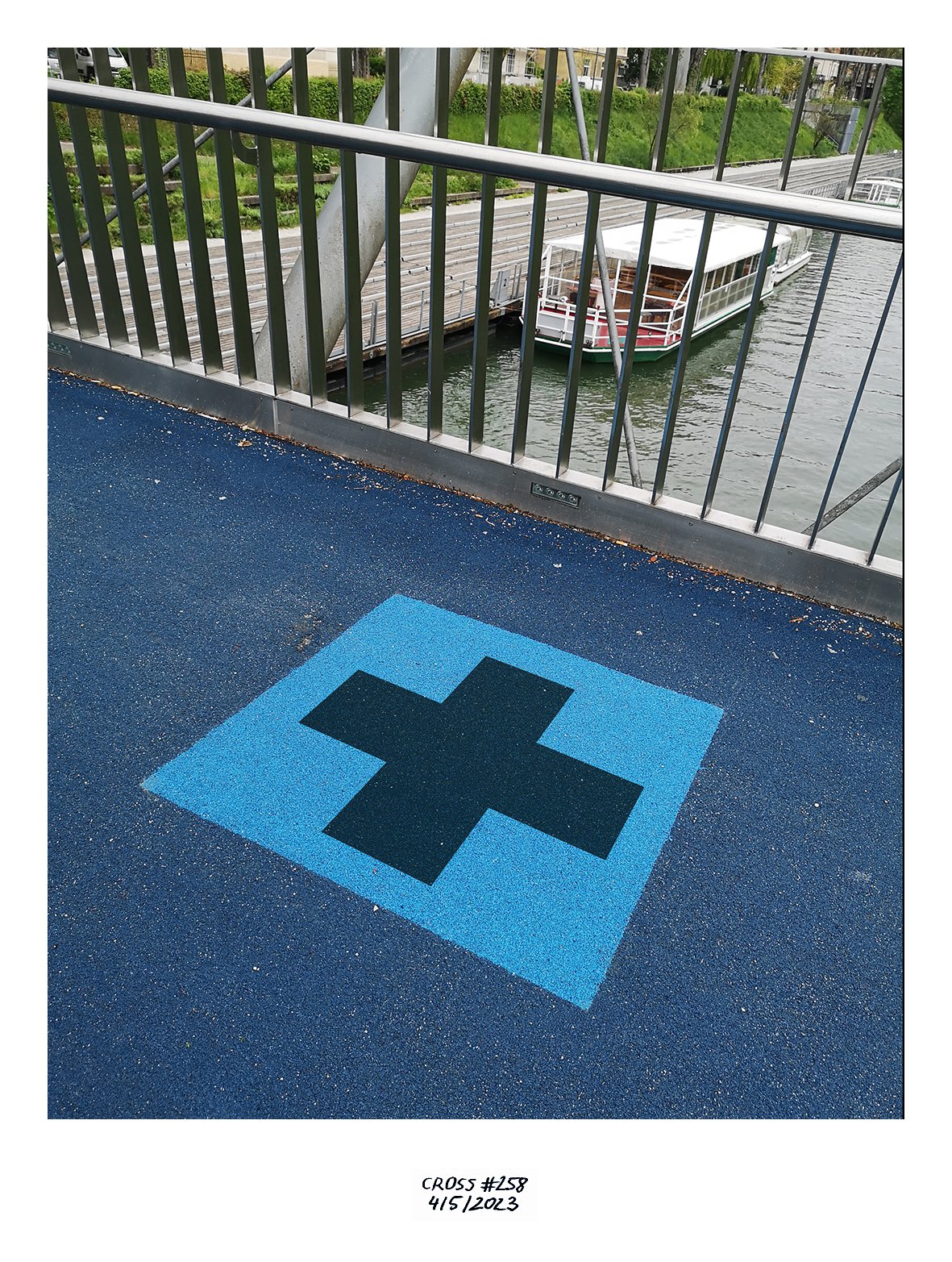
"When I paint with black, I pave the way for the light" Matjaž Stopar wrote in a self-reflection on the exhibition of portraits at the Grad Gallery in Slovenska Bistrica in 2015. In them, he explored the relationship between light - the untouched whiteness of the canvas - and darkness, shadow, and black ink, with which he creates tension by gradually "squeezing" the whiteness of the canvas until the light bursts forward with full force. In his self-reflection, he also noted that the pronounced graphic effect of black and white that arises can be softened by using warm gray, which establishes a transition between the two opposites (contrasts) and at the same time, emphasizes the relief effect of the painting. Meanwhile, a dialogue with the viewer and the audience is taking place, as the human eye builds the image itself. Matjaž Stopar's portrait subjects are artists and scientists, mostly jazz musicians, because this music, while creating and exploring, continually inspires him with its rhythm and melody: tone and pause, black and white, point against point.
Since, Matjaž Stopar became a citizen of the NSK ( Neue Slowenische Kunst ) in 2018, he has intensified his activities as an active member and co-creator in its artistic field. As KonstruktK3 (Mojca Senegačnik, Berthold Schymura, and Matjaž Stopar), their work from a 24-week project is also represented in the collection of the IRWIN group. He collaborated on one of their icons, the sower, with the aforementioned monumental image at the 3rd Biennial of the NSK citizens in 2018 in Trbovlje. For the last 9 years, the frequency of the appearance of the cross motif has been increasing in his work, which he adopted from Kazimir Malevich and the founders of the NSK state. The first cross was created in 2014 from portraits of painters from the IRWIN art group, and in 2018, he started to post crosses on Facebook and Instagram. Since, August 21 last year, he has been posting crosses daily on these social networks, which is why they are given special attention and placement at this exhibition. Suppose we follow his daily posts on social media. In that case, we can see that, in addition to creating them as standalone works of art (drawing, painting, graphics, collage, assemblage), he also notices crosses everywhere: in traces of planes in the sky, in the paving of paths, in the New Year's lighting of cities, window frames, cracked concrete, etc. They also appear as part of his intervention, such as when he draws on them (graffiti with chalk and charcoal), assembles them in digital collages, or places them as photomontages. The cross can appear anywhere: on a crane, in a construction structure, in an interior, on a stone, column, mirror, in the sky, on the ceiling, on a poster, on a misty windshield, as part of the design, at the end of a marshy water ditch, as a monumental cross between two high-rise buildings... Among the many examples of crosses, I would like to highlight the photograph on the cover of the brochure - an isosceles cross of deep blue with a lilac contrast. If we didn't know where the picture was taken, it might seem that Matjaž Stopar intervened the cross over the mirror "golden" geometric shapes which with their edges form St. Andrew's Cross. However, this image appears when looking at the evening sky, when we step into the center between the warm, brightly illuminated monumental pillars at the entrance to the architectural space of the Žale cemetery, designed by architect Marko Mušič and his associates. The subtleties of color transitions and lighting on the panels covering the pillars, their insignificant mounting elements, which stand out luminously on shaded parts like some kind of starry paths, the plants planted on top of the pillars that climb towards the sky and at the same time gravitate downwards, "soften the weight of mathematically" balanced geometric composition of the photographic image and give it lightness and playfulness at the same time... "Art is work" - Matjaž Stopar summed up the title of the book "Art Work" or "The Paradox of Unpaid Artistic Work" by Katja Praznik and placed it in the image of a "housewife" in the "traffic" sign for danger, with the inscription "Art is work" within the framework of the Creative Class group, of which he is a member.
This poster has been translated into different languages and promoted worldwide: from Slovenia to China, a monumental light panel in New York, Russia, Greece ... and as we can see from an example in the brochure. Armstrong and Aldrin also placed it on the Moon in a "turn of time".
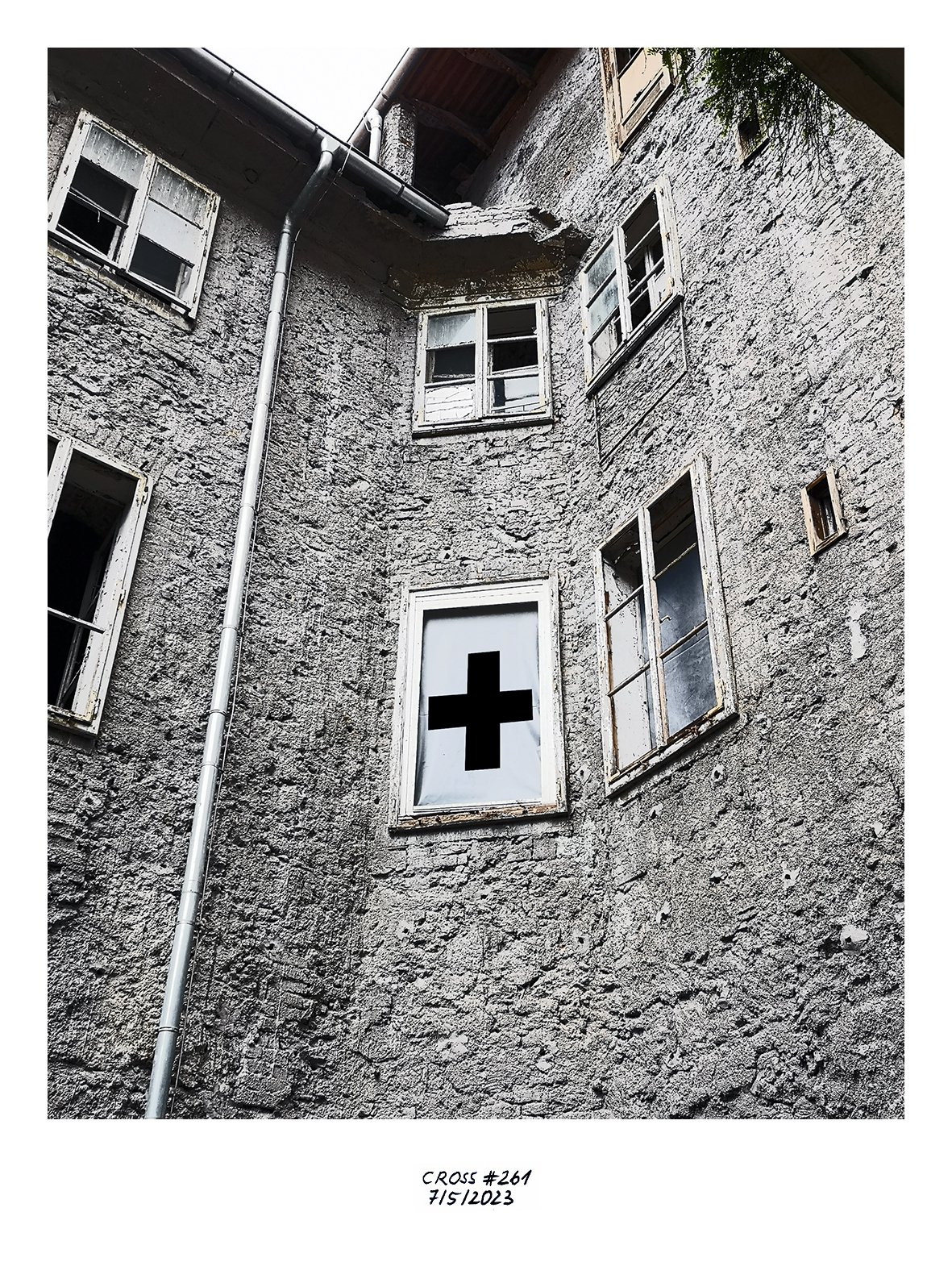
Matjaž Stopar, with his visual art, simultaneously touches on numerous segments and environments, inspiring us with his projects and activities with a broad action radius and perception. Let me remind you of his performance of "making" a portrait of Herman Potočnik Noordung during an exhibition, as well as the opening happening where the musical group Pacho Trillio encouraged us to dance. Also, his video presented at the exhibition takes us on a journey through time that Matjaž Stopar recorded in 24-hour cycles, viewed from the same vantage point with time-lapse intervals of a few seconds, allowing us to perceive changes, including those of weather and seasons, at an accelerated pace. Perhaps it is precisely because of this work, presented and exhibited, that we can perceive, learn, and experience a unit of time differently from other, perhaps lesser-known perspectives, viewpoints, and landscapes.
Nuša Podgornik.

Matjaž Stopar (1950) is a visual artist who works with painting, printmaking, collage, digital art, photography, video, and performance. As an information scientist and computer programmer by profession, he brings his knowledge, perspectives, observations, and perceptions from this field into the world of visual arts. He began his artistic education at the Robova School under the guidance of painter Rajko Slapernik, and continued his studies with professors Zoran Didek and Marjan Tršar at the three-year Evening School of Fine Arts at the Academy of Fine Arts in Ljubljana. Later, he advanced his skills with academic painter Jože Ciuha, and in sculpture and painting with academic sculptor Meta Kastelic. He is the founder, member, and mentor of the 2002 Art Society, where he leads art workshops and education. His interest in past avant-gardes brought him closer to the art of the IRWIN group and NSK, of which he has been a citizen since 2018. In the same year, he founded the performance collective Kunstkolektiv. He is also an active member of the Kreativni razred (Creative Class) movement. In 2022, together with Mojca Senegačnik and Bertold Schymura, he founded the international art collective KonstruktK3. Their joint work, Construction from the 24 Weeks of the CROSSing series, has become part of the IRWIN collection. He has participated in more than 100 group exhibitions - many of which he also curated - including the 3rd NSK Citizens' Biennial, Retropolis Trbovlje (2018), and with the KonstruktK3 collective at the Cirkulacija 2 gallery in Ljubljana (2022). He has exhibited solo at the Grad Gallery in Slovenska Bistrica (2015), at the Kosovel Cultural Centre in Sežana (2016), and elsewhere. He lives and works in Ljubljana.
English translation Julian Joseph Mazgon Ballard
